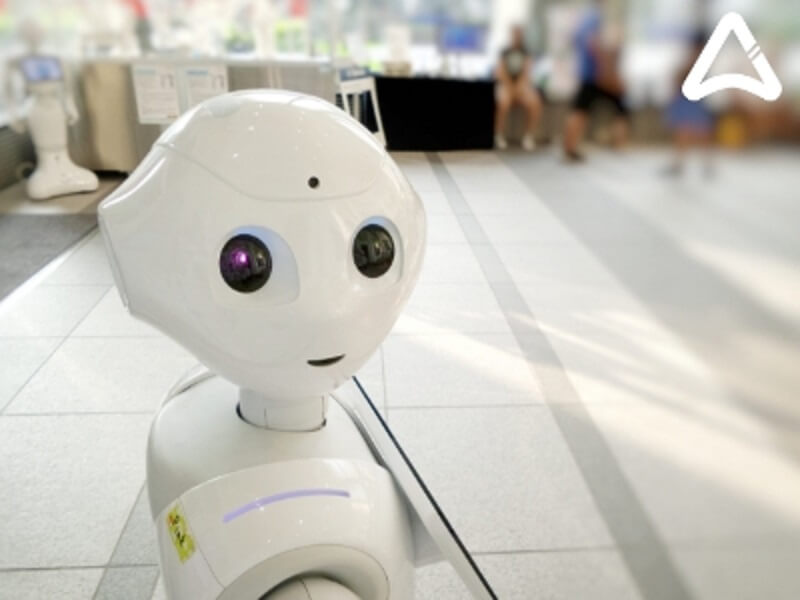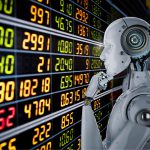It was the Czech writer Karel Capek who coined in 1920 the word “robot” in his play, RUR, Since then, the beloved word has designated a multitude of variants of a common object: artificial intelligence ( AI ). Science fiction literature and cinema, on the other hand, have increased the variants to unsuspected extremes: computers, computers, electronic brains, anthropomorphic robots (androids, cyborg, etc.), constitute some of the most characteristic cyber modalities of AI.
But the cultural tradition of the robot goes back to previous centuries: the myth of the Golem – revealed by Gustav Meyrink – dates from the 16th century, the first automatons are dated in the 18th century, and the nineteenth-century novel has one of its greatest exponents in the Frankenstein by Mary Shelley, from 1818.
Then the author of The War of the Salamanders would come and, after his steps, a long list of science fiction writers, authors on whose grounds artificial intelligence take renewed prominence: Isaac Asimov ( Yo, Robot [1950]), Stanislaw Lem ( Ciberiada [1965]), Philip K. Dick ( Do androids dream of electronic sheep? [1968]), Arthur C. Clarke (2001: an odyssey in space [1968]), etc.
Apart from these more or less speculative, more or less disturbing fictions, technological evolution has been confirming in recent years what time has seemed but typical arguments of escapism to which science fiction tends to tend in its more commercial aspect.
The cinema, an instrument of poetry in the best hands, has addressed the issue of artificial intelligence in the genre of science fiction with uneven results, offering throughout its history about thirty masterpieces, several dozen notable films and a bulky number of minor products, mostly forgotten. From a sociological-philosophical perspective, the paths that open to this research are countless, regardless of the current quality that supports the moral and formal invoice of each film, typical of each era.
The themes unfold between the epidermal and the speculative, sometimes with considerable results. It is not easy to label them, but modern science fiction films have a special emphasis on the following three, namely: smart computers, human robots, and prostheses.
The former provides information that they manage as they see fit, dialoguing even with human characters; the latter usually present themselves as androids, sometimes manifesting a disturbing humanity, which at some point will trigger the ethical reflection of rigor; As for prostheses, they offer various hierarchies, from the typical aid instrument (eg an artificial arm) to the element capable of taking the subject to a different dimension (eg a virtual viewer).
Origins of Cinema – First Experiences
Since its official creation in 1895, the cinematographer has illuminated some short films of little flight and less ambition, supported by documentary shots, slight arguments and dramatized anecdotes. The first and incipient use of artificial intelligence in the history of cinema is undoubtedly due to the great precursor Georges Meleis.
He was not a very prominent director that we find in the spring of cinema, but naïve producer famous for use of technology: that is, machines of a certain precarious sophistication. Perhaps the best exponent is The mechanical charcuterie (Augusts and Louis Lumière, 1897), whose title clearly explains its content.
The first years of silent cinema abound in arguments drawn from the theater, brochures, and vignettes of Parco development. Before the advent of the first achievements of the true father of cinematographic technique, David Wark Griffith, a national film of great artistic value can be cited in which artificial intelligence, although embryonic, are already raised: The Electric Hotel (Second of Chomón, 1907), a key piece in which the Turolense director offers a fun fable about techniques in everyday life five decades before Jacques Tati did the same in his masterpiece My Uncle. In this film of fewer than ten minutes, as we can see, the machine dominates, a machine that is not at all subtle, but functional, made to lighten the life of mortals, but with results as little debatable.
The first human-looking robots break into The Motor Valet (Arthur Cooper, 1906) and Mechanical Mary Anne (Lewin Fitzhamon, 1910): In the first one we see an automaton butler, while in the second, the first female robot of The history of the cinema. Philosophically, the interest in these two works increases when the subject of the consciousness of an artificial entity is treated, even if it is in outline.
Expressionism Contribution
However, the first really important film in which artificial intelligence emerged as an element of philosophical reflection is The Golem (Paul Wegener and Carl Boese, 1920), one of the great masterpieces of German expressionism and a film of inexhaustible wealth, where the constants of a certain type of cinema are already made explicit through the prototypical argument around the myth of the Golem, a man of mud that comes to life thanks to the magic of a sage.
The film thus puts on the table, at least potentially, a teleology of accused simplicity: how an inanimate creature becomes a terrifying entity capable of plunging a population into chaos; and how the inversion of the project of a creative God of man can be opposed in the antithetical representation of the creative man-god of man. This rigidly codified universe, typical of advanced capitalism, acquires multiple nuances in the subject of the artificial slave (the machine) at the service of a master (power). The Golem (Julien Duvivier, 1936), now under the French pavilion.
But the most famous robot of the 1920s bursts into another capital film of German expressionism, Metropolis (Fritz Lang, 1927), where the director’s architectural concerns and a complex dramatic structure confer multiple readings to a film of amazing conceptual complexity. And another novelty: the Metropolis robot, Maria II, is the first android in the history of cinema.
It is, in the plot, a strategic argument, of a robot created by the power structures in order to supplant the identity of the true Mary, spokeswoman for the liberation of the oppressed workers, in order to misrepresent the discourse of the liberator and get to alienate the workers again in the repressive system before their possible emancipation.
A Milestone: Frankenstein’s monster
The 1930s offers the most prototypical example of artificial intelligence in film history: Frankenstein’s monster, the beautiful creation of Mary Shelley, set in motion by the Universal Hollywood house. The two masterpieces of the series are Dr. Frankenstein (James Whale, 1931) and The Bride of Frankenstein (James Whale, 1935), a sort of diptych where the characteristics of a subgenre soon looted everywhere are captured: “mad” scientist create a sinister monster, unleashing the consequences of rigor … On such slippery ethical-aesthetic assumptions, James Whale triumphs clamorously, something that cannot be said of subsequent deliveries and imitations, some of them not without interest.
We will have to wait two decades for the British producer Hammer Films to recover the myth, revised, in her masterful series about Frankenstein: initiated with The Curse of Frankenstein (Terence Fisher, 1957), and continued by Fisher himself in films in the category of Frankenstein Created Woman (Terence Fisher, 1966), Frankenstein’s Brain (Terence Fisher, 1969) or Frankenstein and the Monster From Hell (Terence Fisher, 1972), among others.
Beside Fisher’s films about Frankenstein, the remaining turns on the subject pale whole. We can cite, as a curiosity, the incursions of the Spanish Jesús Franco in this matter through his unclassifiable and very anarchic Dracula against Frankenstein (Jesús Franco, 1971) and The Curse of Frankenstein (Jesús Franco, 1972), whose staging, mottled as few, is dominated by the use of zoom without a clear purpose, something that clashes against the refined classicism of Whale and Fisher films.
Hollywood B series
The British film The Perfect Woman (Bernard Knowles, 1949) recurs, with some expertise, on the theme of the female robot. Across the Atlantic, Hollywood delivers some unpretentious titles, such as Robot Monster (Phil Tucker, 1953), Gog (Herbert L. Strock, 1954) or Kronos (Kurt Neumann, 1957), just before finding a crucial robot in the Classic Forbidden Planet (Fred McLeod Wilcox, 1956): the android Robby; being a science fiction film with multiple themes, and addressing the root issue in a somewhat collateral way, Forbidden planet marks a before and after when it comes to robotics in cinema. Robby dominated the iconography of the robot-machine of the next five years.
A Canonical film
The film that marks the maturity of cinematographic science fiction, hitherto subjected to a more or less picturesque intellectual ingenuity, is 2001: a space odyssey (Stanley Kubrick, 1968), the great masterpiece of its architect, adaptation of the eponymous novel by Arthur C. Clarke, where artificial intelligence materializes in the abstract on the HAL-9000 computer, which decides to rebel against the cosmonauts of the ship space to Jupiter in which he travels when he “discovers” that they want to disconnect him; He will come to murder.
The great achievement of Kubrick is to have captured deep sensations such as anxiety or the impulse of conservation without betraying the man-machine dualism, between the feeling-drive of man versus the cold and aseptic mathematical reason of the machine. Beyond any doubt, 2001: a space odyssey is the most important film made on artificial intelligence and how many problems it entails.
Future
The 1970s are rich in films where artificial intelligences harbor the interest of the function: THX 1138 (George Lucas, 1971), The Fugue of Logan (Michael Anderson, 1976), Mechanical Spawn (Donald Cammell, 1977), The War of the galaxies (George Lucas, 1977) and its sequels, The Black Abyss (Gary Nelson, 1979) or Saturn 3 (Stanley Donen, 1980), among others, correct and increase the previously pointed characteristics of robotics, electronic brains and advanced computers. Perhaps the most interesting film of those immediately referred to is Mechanical Spawn, where director Cammell explores human-machine relationships in the complex terrain of medical prostheses.
The 80s are dominated by the machine like never before in the cinema having an avalanche of films around it. Intellectual explorations, consequently, are trivialized. The argument goes on to be elaborated under predetermined patterns, looking more for the commercial profitability of the product than for its aesthetic values.
On the other hand, domestic video (through its different formats: VHS, Betamax, V2000) begins to impose itself, generating a new kind of audience: the video-club movie buff, which tends to taste when it comes to cinema gender, with a special predilection for science fiction. But after all this facade full of external modifications to what concerns us, there are works of great interest. The most commented work is Blade Runner (Ridley Scott, 1982), aesthetic and baroque film, which takes a new step concerning Kubrick’s film when he deals in depth with the theme of the robot’s humanity, its humanization process.
Greater cinematic interest, however, offers Videodrome (David Cronenberg, 1983), where the man (the organic) and the machine (the metallic) merge in the same plane of apprehension; Anguishing film and full of suspense, Videodrome explores with magnificent results plots hitherto unpublished in the genre. Less important, Christine (John Carpenter, 1983) is about an “intelligent” car, although his argument soon turns to the adolescent booklet. Runaway, special brigade (Michael Crichton, 1984) focuses on the problem of mechanical failures of robots and their dangerous consequences.
However and concerns aside, the 80s brought with them a sociological phenomenon of – in the long run – peculiar consequences: the emergence of Hollywood sagas on anthropomorphic robots, with great violent deployment and covert subliminal message, typical for another part of the Reagan era. The most characteristic exponent is Terminator (James Cameron, 1984), which will have continuity in Terminator 2.
The final judgment (James Cameron, 1991) and will continue in the new millennium with Terminator 3. The rebellion of the Machines (Jonathan Mostow, 2003) and Terminator Salvation (McG, 2009), the computer shows close to the aesthetics of video games.
Cortocircuito (John Badham, 1986) and its sequel Cortocircuito 2 (Kenneth Johnson, 1988), move around the grounds of soft comedy, around the humorous adventures of Number 5, a robot whose bulky learning process causes countless sloppiness. More pretentious is Making the perfect man (Susan Seidelman, 1987), an independent film with a strong feminist touch.
The influence of the capitalist sentimentality of producer Steven Spielberg is manifested in Our wonderful allies (Matthew Robbins, 1987), a domestic fable starring flying saucers determined to fix a building and, with it, improve the lives of those who inhabit it.
The wake of Terminator reappears in another series of the similar sign with RoboCop (Paul Verhoeven, 1987), finally trilogy by joining the first installment RoboCop 2 (Irvin Kershner, 1990) and RoboCop 3 (Fred Dekker, 1991). Again, what defines artificial intelligence is its human form, although clad in metal.
Coming from Japan and leading exponent of the subgenre called cyberpunk, the black and white film Tetsuo, the iron man (Shinya Tsukamoto, 1989) addresses the issue of the link between organic and metallic, based on a peculiar argument: a Man has the unhealthy habit of embedding pieces of iron in his body.
One day he will have a car accident, colliding with another man: the latter, as a result of it, will degenerate into a monstrous being, a kind of artificial intelligence resulting from a series of ineffable mutations. Following its success, the film would know a sequel.
The list of products that use the pretext of artificial intelligence in their arguments does not end here, much less. We can cite, without any intention of completeness, Hardware, programmed to kill (Richard Stanley, 1991), Universal Soldier (Roland Emmerich, 1994) or Matrix (Andy and Larry Wachowsky, 1999), season blockbuster whose success would lead its producers to prolong it by means of two sequels that swept through the half-world ticket offices, contributing some conceptual innovations that unleashed controversy: the virtual world is represented as the other side of the real-world currency.
The most interesting of Matrix it resides in its first half-hour, where some Platonic notes are made (the allegory of the Cavern is retaken) and messianic (the main character, Neo, is thus linked to the Messiah) that later, unfortunately, dissolve in a purely demonstrative special effects show (and which reported four technical Oscar awards to the film). A film like The Bicentennial Man (Chris Columbus, 1999), adapted from a story by Isaac Asimov, appears on a slightly different level of entertainment.
In the latest phases, who is not aware of Jurassic park, Stephen Spielberg’s ventures, and the superhuman films like Wonder Woman, Spiderman, Deadpool, Doctor Strange, etc.?
In recent years, finally, artificial intelligence has taken over the monopoly of science fiction. A disturbing and unequivocal sign that the film industry (primarily that of Hollywood) is preparing the mass audience for new times that imply, no doubt, a flattering change in anthropological paradigm.



